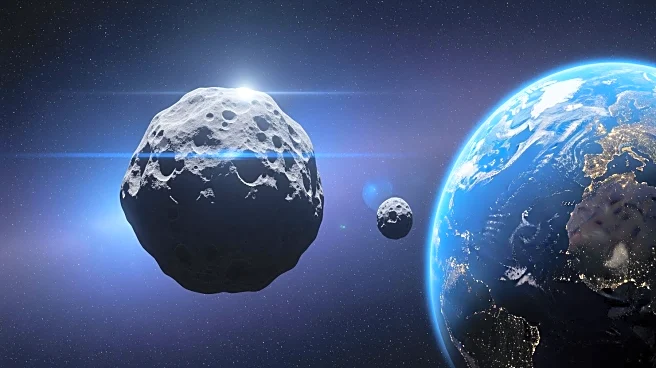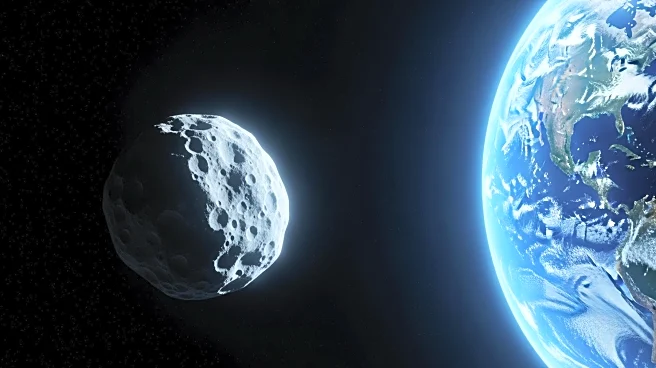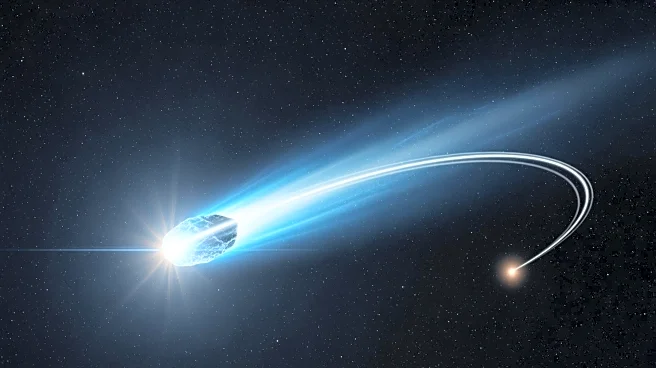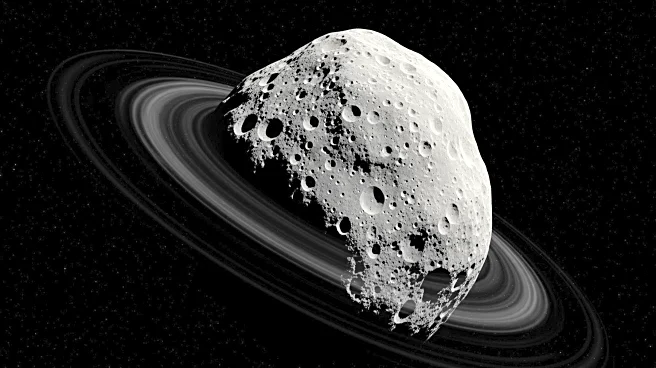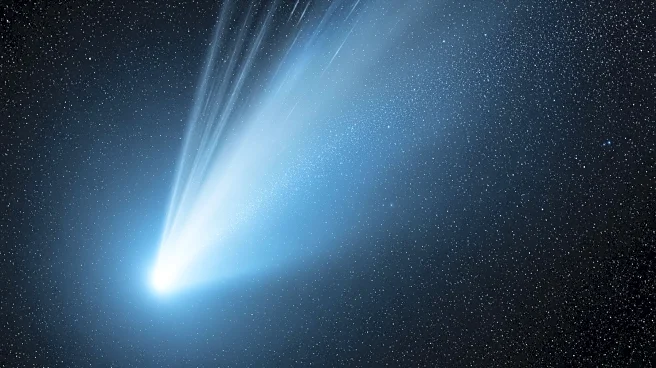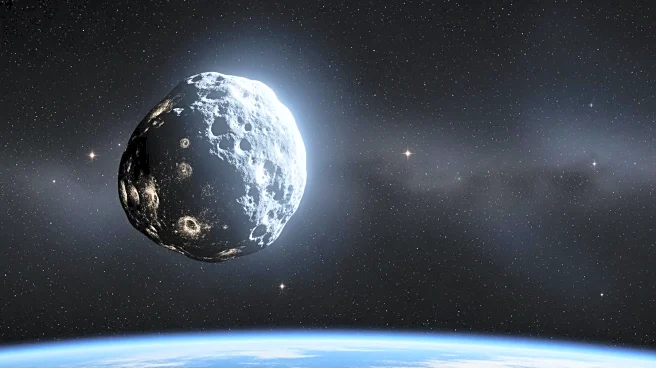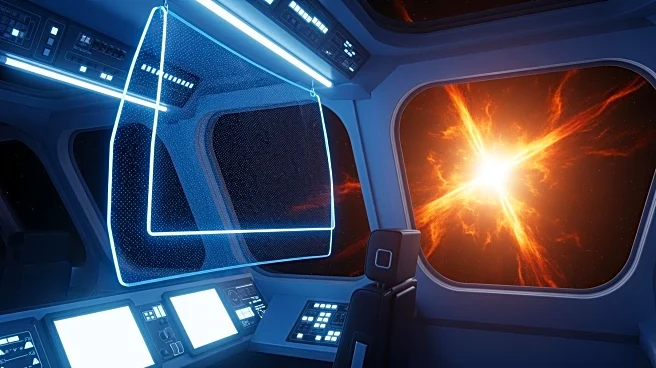What's Happening?
Earth has a new quasi-moon, 2025 PN7, a near-Earth asteroid discovered in late August 2025 by the Pan-STARRS survey. This asteroid, approximately 19 meters in diameter, shares a co-orbital relationship
with Earth, appearing to loop around the planet due to a gravitational illusion. It is expected to remain in this quasi-satellite state until around 2083. The discovery has sparked interest in the scientific community, highlighting the dynamics of Earth's small celestial companions.
Why It's Important?
The identification of 2025 PN7 as a quasi-moon provides valuable insights into orbital dynamics and the behavior of near-Earth objects. These small celestial bodies offer opportunities for studying gravitational interactions and potential planetary defense strategies. Understanding the nature and trajectory of quasi-moons can aid in the development of low-cost space missions and enhance knowledge of Earth's cosmic environment.
What's Next?
NASA and other space agencies will continue to monitor 2025 PN7, refining its orbital data and assessing its long-term behavior. The Vera C. Rubin Observatory is expected to discover more quasi-moons in the coming years, expanding the census of Earth's small companions. Researchers will explore the potential origins of these objects, including the possibility of lunar fragments, and consider their implications for future space missions.
